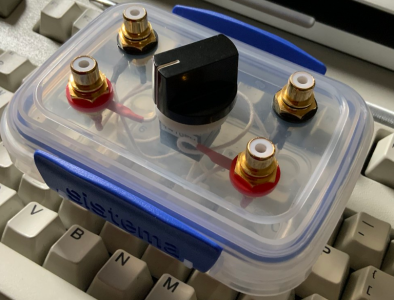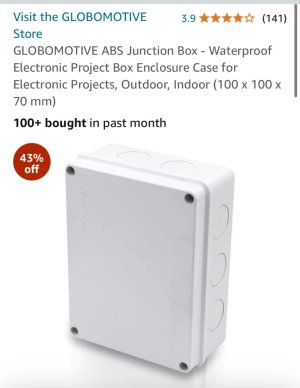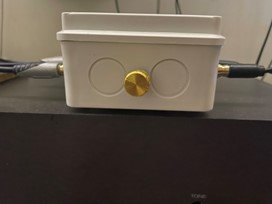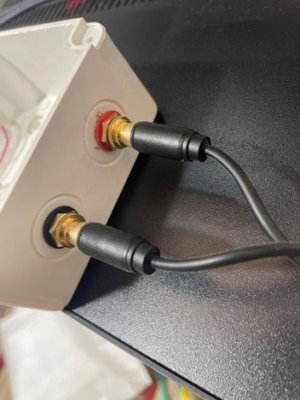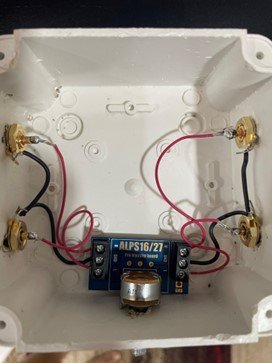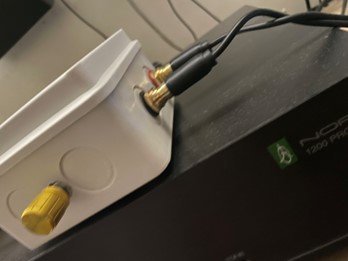After getting the Norge power amp, I was missing out on volume control for my LP player. Hence was wondering whether I should go for something like Schiit Sys. However availability is a problem and as usual the prices in India are sky high. I also came across Khozmo pre amps where the preamp boxes were practically empty (but cost upwards of EUR 400) which fascinated me. So started hunting on the net for something more on DIY lines.
Came across a thread where a simple potentiometer was introduced as a volume control between source and power amp. Hence placed an order for an ALPS circuit board and an ALPHA 10k log potentiometer. Had to download some diagrams since I had no clue as to what is ground, IN, OUT or L/R in a volume pot. I did not go for an ALPS pot since I was not sure what I was getting into.
I tried the initial connection with a single core wire that was lying at home. I did not have the guts to introduce it directly in the chain hence introduced it before my integrated amp to see if it worked with the integrated acting as a volume control for testing.
Quite surprisingly the pot worked with just a bunch of wires (see pic)
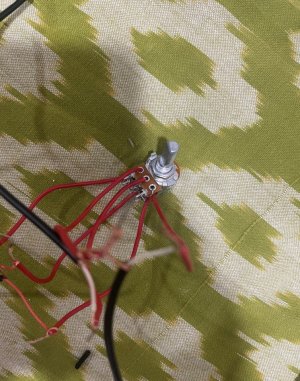
Next was putting it into the circuit board and testing without the soldering & it worked:
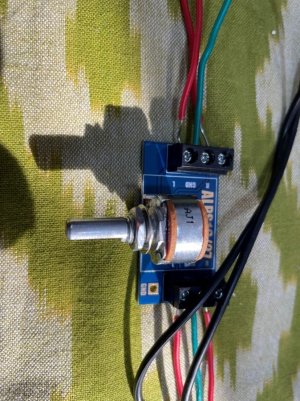
Next came my weak point- soldering - however managed in 10 min without burning the plastic
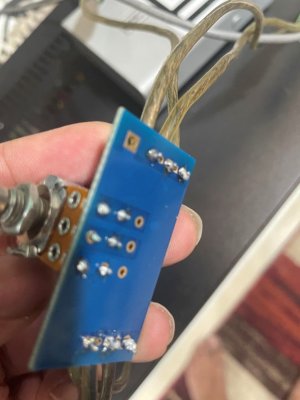
Present avatar with the circuit board and some RCA plugs:
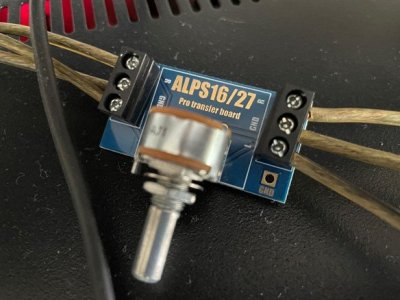
Finally introduced it into the main chain with the Marantz TT - Norge Power amp and the KEF LS50 Meta. The sound is very clear. Next I checked it between my iphone- Schiit Modi+ DAC and the Norge Power Amp. Again the sound was very very clear and loud and I got a feeling that I was listening to the Schiit DAC directly without any coloration. The analog dial also gives the feeling of power under the hood (under the Norge) as compared to digital volume controls with those infinity knobs .
.
Overall cost of my "hi-end" preamp has been INR 300-350.
If I need to introduce anything in the circuit please let me know.
DIY seems to give me far more satisfaction and joy than buying expensive stuff. I also tend to love the DIY stuff more than the ready made stuff. So next project is going to be a simple amp. Back to my "Electronics for dummies" book
Came across a thread where a simple potentiometer was introduced as a volume control between source and power amp. Hence placed an order for an ALPS circuit board and an ALPHA 10k log potentiometer. Had to download some diagrams since I had no clue as to what is ground, IN, OUT or L/R in a volume pot. I did not go for an ALPS pot since I was not sure what I was getting into.
I tried the initial connection with a single core wire that was lying at home. I did not have the guts to introduce it directly in the chain hence introduced it before my integrated amp to see if it worked with the integrated acting as a volume control for testing.
Quite surprisingly the pot worked with just a bunch of wires (see pic)

Next was putting it into the circuit board and testing without the soldering & it worked:

Next came my weak point- soldering - however managed in 10 min without burning the plastic

Present avatar with the circuit board and some RCA plugs:

Finally introduced it into the main chain with the Marantz TT - Norge Power amp and the KEF LS50 Meta. The sound is very clear. Next I checked it between my iphone- Schiit Modi+ DAC and the Norge Power Amp. Again the sound was very very clear and loud and I got a feeling that I was listening to the Schiit DAC directly without any coloration. The analog dial also gives the feeling of power under the hood (under the Norge) as compared to digital volume controls with those infinity knobs
Overall cost of my "hi-end" preamp has been INR 300-350.
If I need to introduce anything in the circuit please let me know.
DIY seems to give me far more satisfaction and joy than buying expensive stuff. I also tend to love the DIY stuff more than the ready made stuff. So next project is going to be a simple amp. Back to my "Electronics for dummies" book



